[ESP/ENG] Idolos del automovilismo mundial: Niki Lauda, la leyenda que volvió de la muerte. / World motorsport idols: Niki Lauda, the legend who came back from the dead.
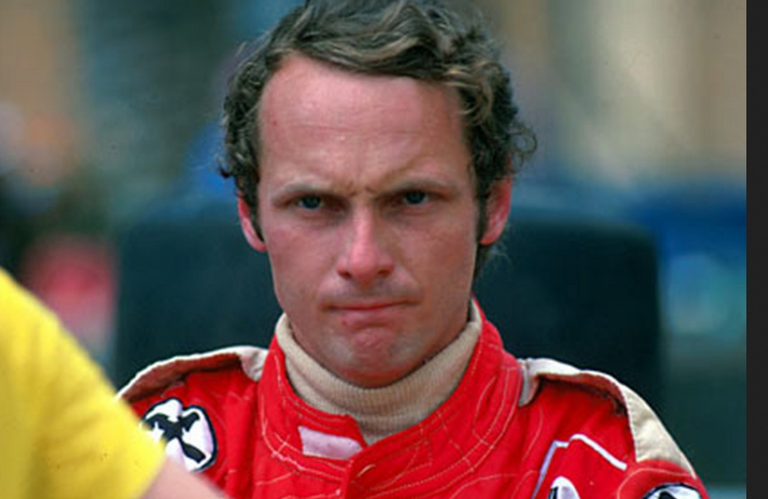
Pocas personas, o mejor dicho pocos pilotos, han logrado identificarse tanto con una marca como el austríaco Niki Lauda.
No lo ha hecho el actual pluricampeón Lewis Hamilton, no lo hizo Vettel cuando ganó cuatro campeonatos seguidos con Red Bull y probablemente tampoco lo hará en el futuro Max Verstappen si logra coronar su sueño de campeón.
Tal vez el único que, en ese aspecto, se le aproxime bastante es Michael Schumacher. E, ironía del comentario, exactamente ambos con Ferrari.
Será porque tal vez decir Ferrari en Fórmula 1 es decir historia, tradición triunfos y derrotas pero al final de cuentas es decir prestigio, es asociar una marca a un deporte. Y no es poco.
Y Niki Lauda entró en ese Olimpo de privilegiados.
Sobre todo es un momento escaso de resultados positivos como lo es el actual para la "scuderia di Maranello", el "cavallino rampante" como acostumbran decir sus más fervientes seguidores italianos.
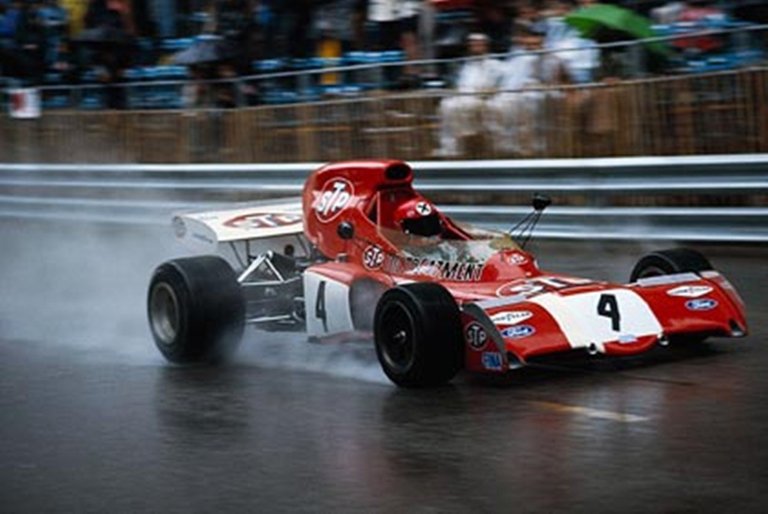
Few people, or rather few drivers, have managed to identify themselves with a brand as much as the Austrian Niki Lauda.
Not the current multiple champion Lewis Hamilton, not Vettel when he won four championships in a row with Red Bull, and probably not Max Verstappen in the future either, if he succeeds in his dream of becoming champion.
Perhaps the only one who comes close in that respect is Michael Schumacher. And, irony of the commentary, exactly both with Ferrari.
Maybe because to say Ferrari in Formula 1 is to say history, tradition, triumphs and defeats, but at the end of the day it is to say prestige, it is to associate a brand to a sport. And that is no small thing.
And Niki Lauda entered that Olympus of the privileged.
Especially at a time when the "scuderia di Maranello", the "cavallino rampante" as its most fervent Italian followers are accustomed to say, is in a time of scarce positive results.
Un temple calculador. / A calculating temper.

Si hay un piloto que supo ganar carreras y campeonatos con un monoplaza que no se destacaba tampoco tanto del resto ese era Niki Lauda. Calculador, frio, autor de muy pocos errores, llevando la máquina hasta el mismo límite pero sin intentar superarlo, óptimo administrador de los pneumáticos.
Podemos hablar de la gloria y el idilio entre Schumacher-Ferrari pero no podemos negar que ese auto era un fenómeno técnico para el época. Y que el equipo técnico, ese que vemos a la hora da la salida de los boxes era algo fuera del común.
Recuerdo que (aún vivía en Italia) en el año 2006 la perfecta sincronización de los hombres del equipo Ferrari de Maranello (ingenieros y mecánicos) llevó a Martin Elliott, médico y jefe de cirugía infantil del Great Ormond Street Hospital for Children de Londres (Inglaterra) a establecer un acuerdo con Ferrari para aplicar esos automatismos y sincronización de movimientos en los pasillos del hospital que dirigía, especialmente en el sector de terapia intensiva de cardiología infantil.
Algo similar ocurría hasta este año con Lewis Hamilton, una unión indestructible (hasta el momento) entre equipo y piloto. Donde incluso los errores de uno u otro lado eran subsanados por la tremenda superioridad puesta de manifiesto.
No era así en la era Ferrari de Niki Lauda. Los puntos se ganaban a fuerza de estrategia, cabeza fría y sobre todo sumar puntos. No cometer errores. Y aprovechar al máximo los que cometían los rivales.
En ese aspecto Niki Lauda era un verdadero maestro. Fue campeón mundial con Ferrari en 1975 y 1977 y con McLaren en 1984. Subcampeón en 1976 con Ferrari.
Para tener una idea de lo difícil que era ganar en ese entonces van estos números: 177 careras disputadas, solo 25 victorias y 54 podios. Y sin embargo esos resultados, que pueden ser evaluados como "escasos" en la actualidad le permitieron obtener tres campeonatos mundiales, un subcampeonato y dos cuartos puestos.
Cuando sale campeón en 1975 gana 5 carreras sobre 15 disputadas. En 1977 gana todavía menos: solo tres triunfos en 17 carreras disputadas. Pero (casi) siempre suma.
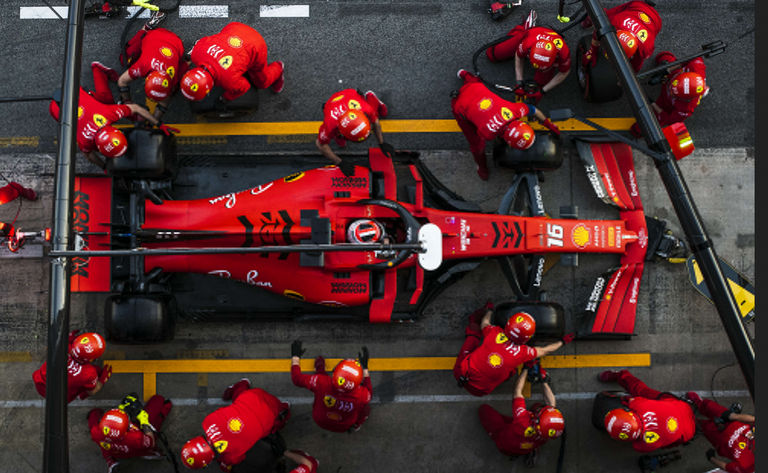
If there is a driver who knew how to win races and championships with a car that did not stand out from the rest, that was Niki Lauda. Calculating, cold, author of very few mistakes, taking the machine to the very limit but without trying to exceed it, an excellent manager of the tires.
We can talk about the glory and the Schumacher-Ferrari idyll, but we cannot deny that this car was a technical phenomenon for the time. And that the technical team, the one we see at the pit lane exit, was something out of the ordinary.
I remember (I was still living in Italy) that in 2006 the perfect synchronization of the men of the Ferrari team in Maranello (engineers and mechanics) led Martin Elliott, doctor and head of children's surgery at the Great Ormond Street Hospital for Children in London (England) to establish an agreement with Ferrari to apply these automatisms and synchronization of movements in the corridors of the hospital he directed, especially in the intensive care sector of children's cardiology.
Something similar happened until this year with Lewis Hamilton, an indestructible union (so far) between team and driver. Where even the mistakes of one side or the other were corrected by the tremendous superiority shown.
This was not the case in the Ferrari era of Niki Lauda. The points were won by dint of strategy, cool head and above all to score points. Not making mistakes. And to make the most of the mistakes made by the rivals.
In that aspect Niki Lauda was a true master. He was world champion with Ferrari in 1975 and 1977 and with McLaren in 1984. Runner-up in 1976 with Ferrari
To get an idea of how difficult it was to win at that time, here are these numbers: 177 races contested, only 25 victories and 54 podiums. And yet those results, which could be considered "scarce" nowadays, allowed him to win three world championships, one runner-up and two fourth places.
When he became champion in 1975, he won 5 races out of 15. In 1977 he won even less: only three wins out of 17 races. But he (almost) always adds up.
Renacer es revivir, y también ganar. / To be reborn is to revive, and also to win.
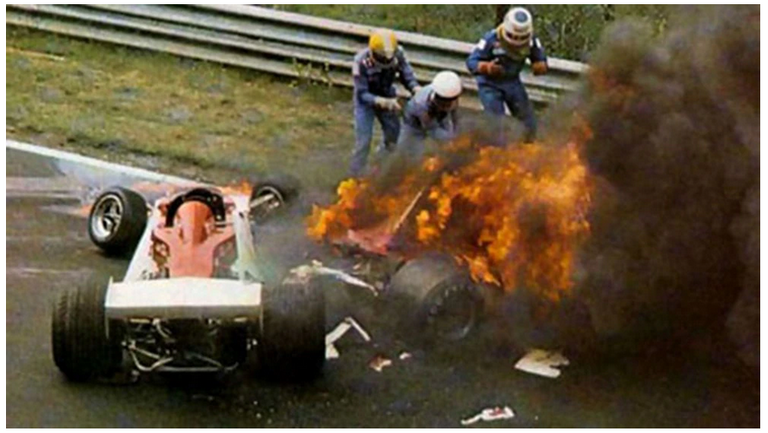
En 1976 en el circuito de Nurburgring Lauda sufre un tremendo accidente y salva la vida gracias al auxilio de Arturo Merzario quien detiene su auto y, no sin esfuerzo, lo rescata de la Ferrari envuelta en llamas. El Cowboy de la Fórmula 1 como lo llamaban sus amigos por el clásico sombrero texano que acostumbraba llevar se jugó la vida salvando la de su amigo.
Cuando ya todos lo daban por muerto y hasta el mismo sacerdote le había dado la extremaunción pensando en que no pasaría la noche Niki Lauda con una fuerza de voluntad inclaudicable luchó por sobrevivir con uñas y dientes y 33 días más partes se volvía a poner el casco, diciendo: "voy a volver".
Una infinita cantidad de intervenciones quirúrgicas y trasplantes de piel para salvar lo que se podía de su rostro. Sin embargo seis semanas después volvia a las pistas y un año más tarde se coronaría de nuevo campeón.
Pasa a Brabham y en 1979 anuncia su retiro para someterse de nuevo a una complicada serie de tratamientos médicos.
Pero su sed de competir no se había apagado. Vuelve en 1981 con McLaren y en 1984 obtiene su tercer título mundial. Fiel a su estilo sobre 16 carreras puntables vence solo en 5. Pero se lleva el título a casa.
En 1985 luego de una temporada con muchos abandonos y algunos accidentes decide retirarse definitivamente de las pistas.
Dejando el recuerdo el recuerdo imborrable de un piloto concienzudo en los detalles hasta el límite de lo maniacal, que minimizaba los riesgos de su equipo y maximizaba los beneficios que podia sacar de los errores ajenos.
Un recuerdo que aún subsiste aún hoy a poco más de dos años de su desaparición física.
In 1976 at the Nurburgring circuit Lauda suffers a tremendous accident and saves his life thanks to the help of Arturo Merzario who stops his car and, not without effort, rescues him from the Ferrari engulfed in flames. The Formula 1 Cowboy, as he was called by his friends because of the classic Texan hat he used to wear, risked his life saving his friend's life.
When everyone thought he was dead and even the priest himself had given him the last rites thinking that he would spend the night, Niki Lauda with an unshakable willpower fought to survive tooth and nail and 33 days later he put on his helmet again, saying: "I'm going to come back".
An infinite number of surgeries and skin transplants to save what he could of his face. However, six weeks later he was back on the track and a year later he was crowned champion again.
He moved to Brabham and in 1979 announced his retirement to undergo a complicated series of medical treatments.
But his thirst for racing was not quenched. He returned in 1981 with McLaren and in 1984 he won his third world title. True to his style, he won only 5 out of 16 races, but he took the title home.
In 1985, after a season with many retirements and some accidents, he decided to retire definitively from the tracks.
Leaving the indelible memory of a driver conscientious in the details to the limit of the maniacal, who minimized the risks of his team and maximized the benefits he could get from the mistakes of others.
A memory that still survives even today, a little more than two years after his physical disappearance.
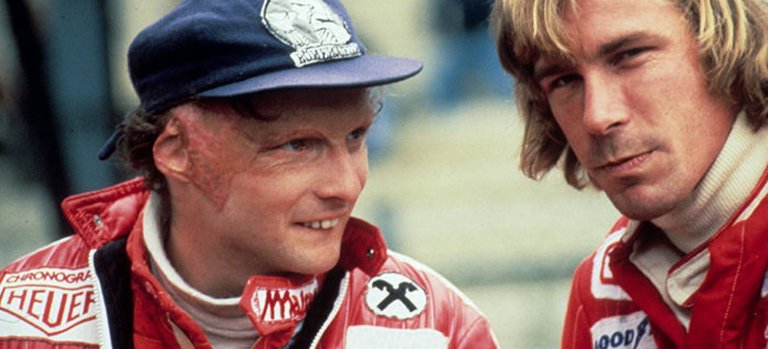
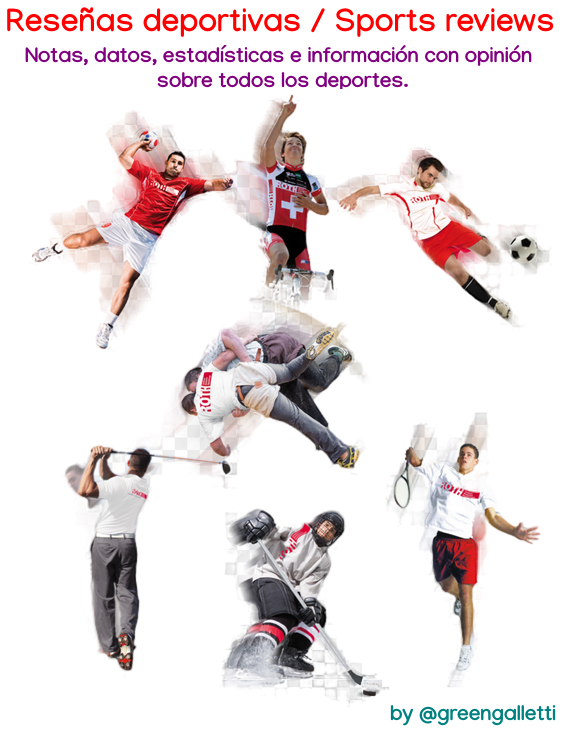

https://twitter.com/HugoRep/status/1415061489073938441
The rewards earned on this comment will go directly to the person sharing the post on Twitter as long as they are registered with @poshtoken. Sign up at https://hiveposh.com.
Thanks @poshtoken!